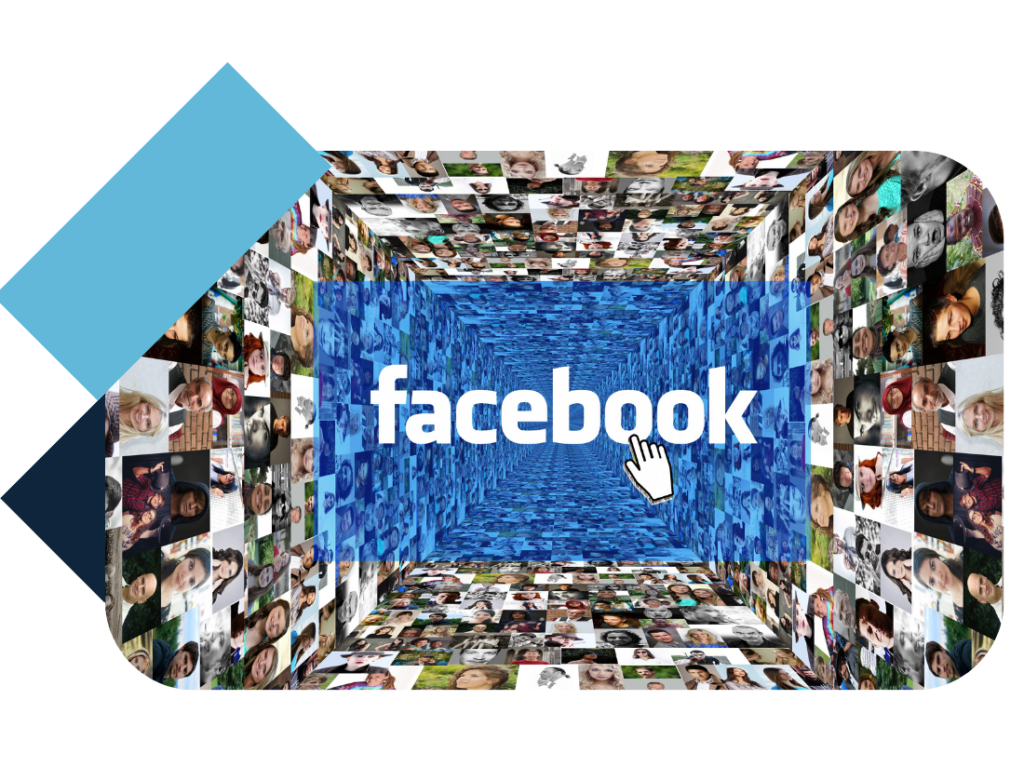Facebook has the biggest user base of any social media platform out there, with approximately 3 billion monthly active users. Over and above this, in Q2 of this year, Meta made 31.5 billion in ad revenue. What is interesting to note off the back of these stats is that there are still business owners who claim that they don’t use Facebook ads because they don’t work, or are a waste of money.
The truth is, Facebook ads can work if there is an understanding of how to build a proper Facebook strategy and assess the ad performance to adjust this strategy accordingly over time. Because small business owners are usually wearing a lot of hats, and managing their marketing on top of their already busy schedules, not taking the time to spend developing a strategy is the biggest culprit to failed Facebook ad campaigns.
Facebook ads can work for virtually any business, all it takes is a bit of know-how, a plan and clear goals and objectives. To help small business owners blow up their business using Facebook ads we’ve put together a few effective ways to go about this.
1. Have a clear strategy
One of the biggest mistakes that business owners make when developing a Facebook ad campaign, is getting going without a strategy. You need to have a plan and you need to make sure that the money you are putting in is actually going to pay off. This is the number one reason some people don’t think Facebook ads work, they put money into Facebook ads without a plan, and are disappointed when they don’t see any returns.
You need to be clear on how much you are looking to spend, how long you want your campaign to run and what results you are wanting to see. This strategy should include who exactly you are wanting to target, what message you are wanting to communicate to them and what action you want them to take in the end.
There are so many companies today that do not give targeting the time and thought it deserves. You need to really think about who you’re targeting, instead of just creating a generic “We sell cycling gear so we target cyclers.” Spend some time studying your target audience and focus on more than just gender, age and location.
This detail influences how you will be setting up your campaign and what type of Facebook advertising you’ll be using. So, take some time to understand their beliefs, values, interests and lifestyles. You need to really know who you are marketing to when creating ads. This should all be clear in your mind before you launch a campaign.
Once you have launched your campaign make sure you are regularly assessing how it has performed and determine whether you need to make changes such as optimizing the placement of your ad or the message, otherwise, you will just keep throwing money into these ads in the hopes that they will eventually work.
2. Know your KPIs
If you don’t know what your goals and objectives are it is going to be very difficult to know whether your ad campaigns are successful or not. Similarly, if you haven’t been taking note of the metrics that are important to your business, and have nothing to compare your campaign results to, it will also make it difficult to get a holistic picture of the performance of your ad campaigns and the impact that they are having on your business.
Always ensure that you are clear on what you want to achieve and make adjustments to your ads if they are not performing or helping you achieve the desired results.
Here are some examples to give you an idea of what we mean:
Example 1: If you want to increase your website traffic take note of your current weekly/monthly visits and determine what percentage increase you want to see. Be sure to calculate how much a new visitor is worth to you so that this can also help guide your campaign budget. I.e. How much are you willing to spend/pay for a new visitor to your website?
Example 2: If you want to see more newsletter sign-ups take note of your current number of subscribers and the number of new subscribers you want to see by the end of the campaign. Again, having an indication of how much you are willing to spend on a new subscriber will help you plan your budget. In this case, a subscriber might be worth more than just a website visitor. This might mean that you’re willing to put more budget behind this campaign as opposed to example 1.
Example 3: If you are focused on lead generation and website conversions make sure you have a conversion rate in mind so that you can aim to meet that goal. Conversions usually mean revenue and new business. Here it is helpful to ask yourself how much you would be willing to spend to acquire a new customer, a metric known as cost per acquisition (CPA).
3. Tailor your ads to your audience
Understanding your target market is only half the battle. When it comes time to create Facebook ads, you will see a little box known as Audience Definition. This box tells you who this specific ad will be targeting. One of the best things you can do when focusing on Audience Definition is to think quality over quantity. It can be really tempting to see that your ad could potentially reach 1 billion people, but that is not what you want. You want to focus specifically on your niche, to begin with. So, narrow down your audience details.
Pick a few areas you want to target, pick an age range, and even pick some more targeting features like interests, education or relationship status. Ideally, you want your campaign to reach 5,000 to 15,000 people. While it doesn’t sound as exciting as reaching 1 billion people, you are now targeting the right people who are most likely to buy or take action on your product offerings or services.
4. Create compelling text or banner ads
Delivering the right offer, to the right audience, with the right message can be really powerful and persuasive. Some people believe that ad copy or graphics aren’t an important factor. However, in an online world where people are bombarded by thousands of messages a day, this couldn’t be further from the truth. Hundreds, or thousands, of businesses and marketers are trying to compete for your attention every minute of every day. That’s the world we live in and you have to stand out from the generic messages that your potential customers are glossing over.
This means creating an engaging headline that will draw people in. Keep the body of your text simple and get straight to the point. Because you only have a few words to work with you need to make them count. Don’t waste your space trying to be super creative. Make it easy to understand and compelling. Your text body should include two things: more details about your offer and then a call to action.
Similarly, with banner advertising, ensure that it’s personalised and that your image reiterates the points you are trying to make in your ad copy. A powerful image can be memorable and engages your audience in a way that text ads simply can’t.
5. Run A/B Testing regularly
Once your ad is launched, your work’s not done. You also need to focus some time and energy on split testing. You should typically know within 200 clicks how an ad is doing and whether or not you should adjust the ads. This allows you to launch multiple variations of an ad and quickly figure out which ones are generating the best success rate. At the same time, don’t pull the plug on an ad too soon if you don’t see immediate results. The goal is to not give up too early when split testing, and to give it time.



